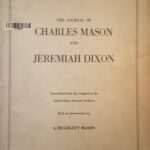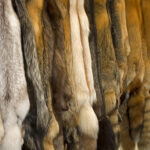 November is Native American Heritage Month. And since I am still unpacking boxes containing my research, it seems a good time to revisit some of it. When I began writing Death on the Line, I knew I needed to learn more about the native tribes in the area. I knew from Mason’s journal that the Pennsylvanian commissioners in Philadelphia had agreed to provide Charles Mason and Jeremiah Dixon with guides once they left the settled areas and moved westward into the wilderness. Charles Mason mentions their guides but doesn’t specify their tribe.
November is Native American Heritage Month. And since I am still unpacking boxes containing my research, it seems a good time to revisit some of it. When I began writing Death on the Line, I knew I needed to learn more about the native tribes in the area. I knew from Mason’s journal that the Pennsylvanian commissioners in Philadelphia had agreed to provide Charles Mason and Jeremiah Dixon with guides once they left the settled areas and moved westward into the wilderness. Charles Mason mentions their guides but doesn’t specify their tribe.
Tribes like the Lenape dominated the colony’s eastern portion and seemed unfriendly to the English invaders. In an attempt to raise much-needed funds, the Pennsylvania government created the Walking Purchase agreement as a way to sell Lenape land to colonial settlers. The Penn family claimed a 1686 treaty that ceded a large portion of the present-day Lehigh Valley to a western boundary, stretching for the distance a man could walk in a day and a half, hence the name. That treaty was later described as a “convoluted sequence of deception, fraud, and extortion orchestrated by the Pennsylvania government.” Needless to say, violence ensued, with the tribe resisting colonial expansion until the French & Indian War.
So it would seem the Lenape may not have been the commissioner’s choice to send into the wilderness with Mason and Dixon. Other options were the Susquehannock and the related Conestoga, both of whom lived along the Susquehanna River. Each of these had established trade relations with Europeans. With the slaughter of the Conestoga shortly after Mason and Dixon’s arrival, it is unlikely they were chosen. So, I decided on the Susquehannock as a plausible option and researched their history in the area in the mid-18th century.
 The earliest written report of the tribe comes from John Smith, the English explorer who mapped his journey around the Chesapeake Bay in 1608. He describes meeting “a group of about 60 “gyant-like” warriors” at the mouth of the Susquehanna River. He further states, “They can make neere 600 able and mighty men, and are pallisadoed [palisaded] in their Townes to defend them from the Massawomekes, their mortal enemies.” Other records also describe them as tall and warlike and in possession of hatchets, knives, and other French weapons.
The earliest written report of the tribe comes from John Smith, the English explorer who mapped his journey around the Chesapeake Bay in 1608. He describes meeting “a group of about 60 “gyant-like” warriors” at the mouth of the Susquehanna River. He further states, “They can make neere 600 able and mighty men, and are pallisadoed [palisaded] in their Townes to defend them from the Massawomekes, their mortal enemies.” Other records also describe them as tall and warlike and in possession of hatchets, knives, and other French weapons.
In the early 1620s, they were heavily involved in the fur trade along the river with access to trading on the Chesapeake and the Delaware. They traded these furs, such as beaver, for cloth, beads, brass kettles and pots, axes, knives, and tools. Eventually, this extended to firearms; by the 1630s, they owned several muskets. English merchant William Claiborne began trading with them when he established a trading post on Kent Island and later a larger outpost on Palmer’s Island near the mouth of the Susquehanna.
Soon, however, relations with the colonists deteriorated when the Province of Maryland was formed in 1634. This new colony allied with the Piscataway, a tribe that was often the target of Susquehannock raids. This formation disrupted their trade alliance with Claiborne when he refused to acknowledge the new colony’s authority. In 1637, a legal dispute forced Claiborne to return to England, and the colony of Maryland seized his property. Governor Calvert wanted the natives to settle on the Potomac River, but they decided on a site on Piscataway Creek where they built a palisaded fortress.
Members of the Iroquois Nation, desiring the wealth of the Susquehanna Valley, declared war on the tribe in 1664, which nearly decimated the Susquehannock. A group of Virginians chasing raiders across the Potomac into Maryland in 1675 killed several Susquehannock by mistake, after which several raids were blamed on the tribe. Years of war against the Haudenosaunee and as well as illness took their toll on the tribe. It is estimated that by 1700, only 300 or so remained on their former lands.
By the time of the French & Indian War, the tribe had settled along the river in Pennsylvania. In an agreement with William Penn, founder of the colony, in 1700, the tribe deeded their lands in the Susquehanna Valley to Pennsylvania in return for a 500-acre tract set aside for their use, along with the rights to set  up trading posts. This treaty was ratified in 1701, and the site soon became known as a vital trading center.
up trading posts. This treaty was ratified in 1701, and the site soon became known as a vital trading center.
Jesuit missions were established in Maryland early in its formation when Father Andrew White arrived in 1634 on the Dove. He set about bringing the Bible to the Natives and not only translated portions of it into their language but used it to help Natives improve their English. Many converted to this new religion, others kept the old ways, while a large number found ways to blend the two, seeing no conflict in this belief. With the later dissolution of the Catholics in the colony, many of the remaining monks moved to Pennsylvania. Native Americans were used to understanding the language of the other tribes they encountered. That also held true of learning languages such as French, English, and Spanish as trade relations grew.

So, I selected the Susquehannock as the tribe to guide Charles Mason and Jeremiah Dixon on their ground-breaking expedition through the wilderness.
Interestingly enough, I now live in the Piscataway territories near Accokeek and Piscataway Park in Maryland. Having been raided by the Susquehannock over the years before their demise, the folks here don’t have many positive things to say about their northern neighbors. I suppose I can’t blame them.
